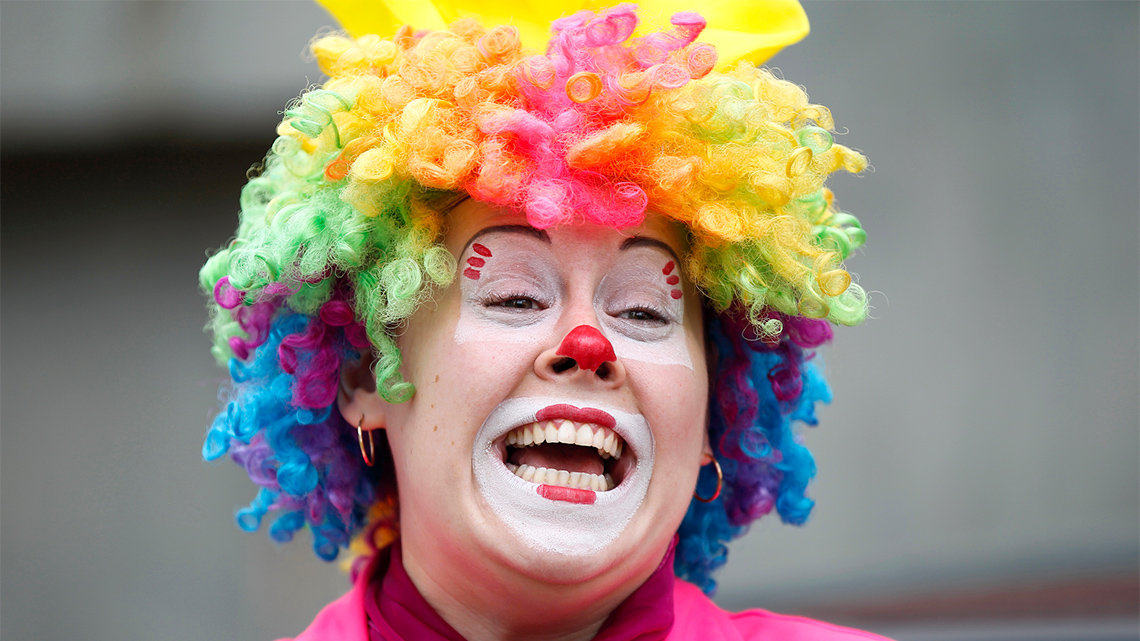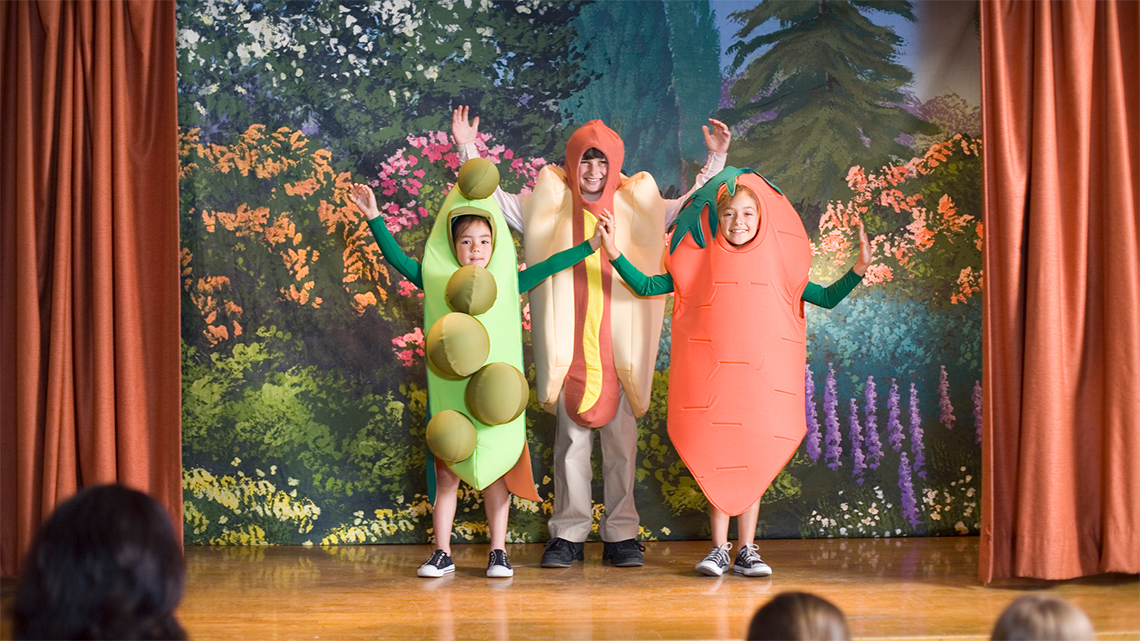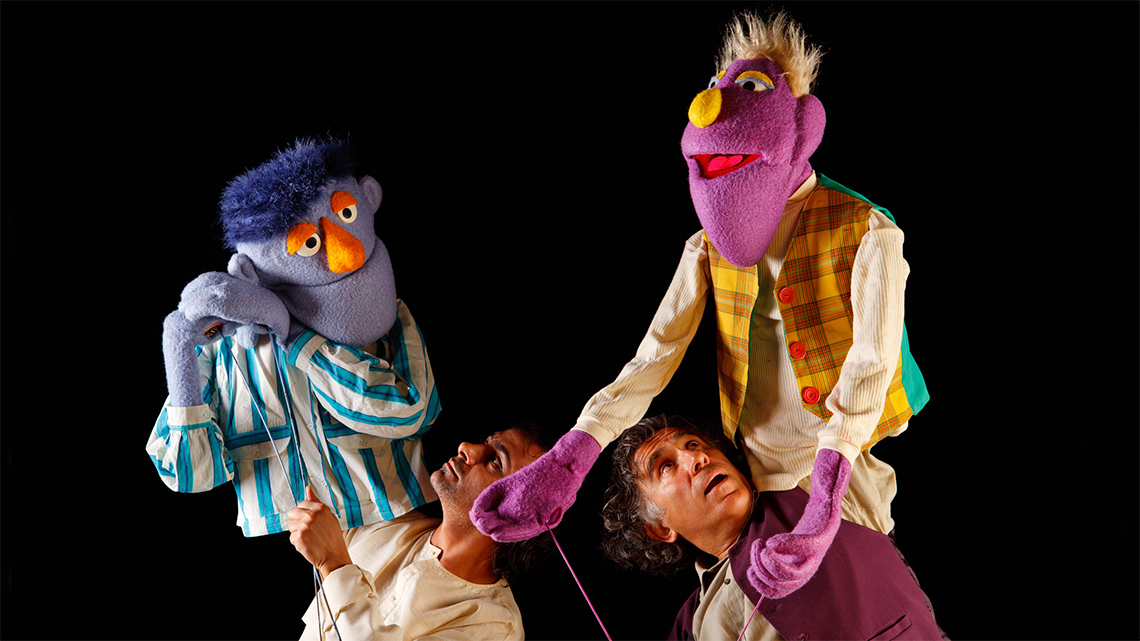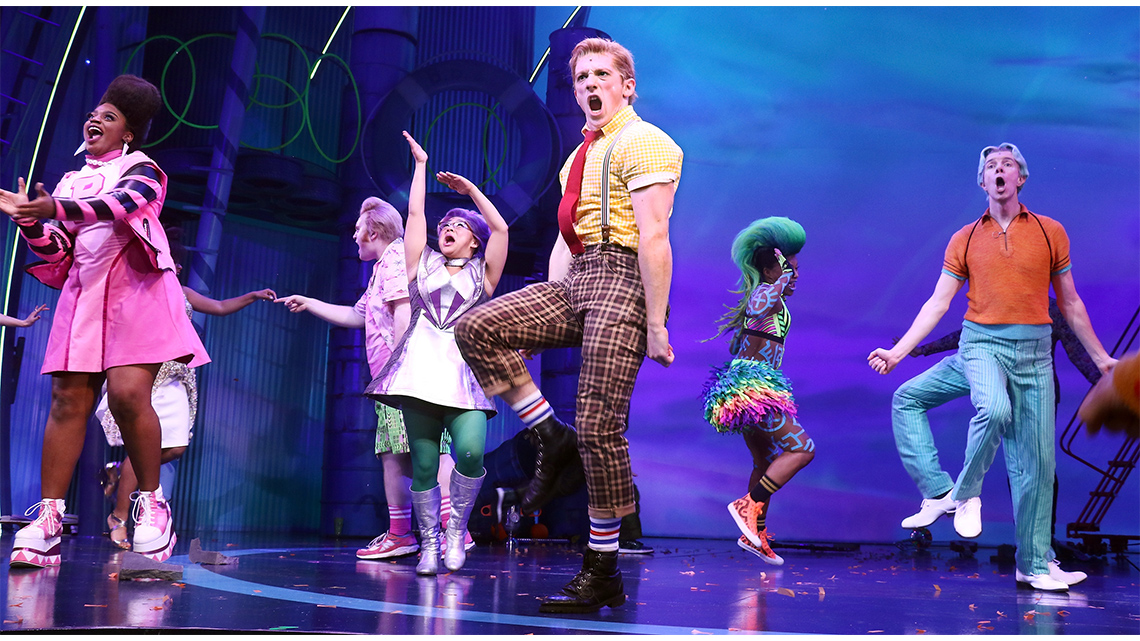Minds On
Let’s warm up!
Don’t forget to do your safety check!
Warm Up
Warm up: Tongue twisters!
Try the following tongue twister. Can you say it and repeat it?

Fuzzy Wuzzy tongue twister
Fuzzy Wuzzy was a bear
Fuzzy Wuzzy had no hair
Fuzzy Wuzzy wasn’t fuzzy, was he?
Explore the following audio recording entitled “Fuzzy Wuzzy Tongue Twister” to follow along and practise this tongue twister.
Fuzzy Wuzzy Tongue Twister
Good job with the tongue twister!
Drama game
Now, let’s try the following game!
Find five everyday items around your house (e.g., a broom, a book, a pencil, a pillow).
Pick each one up and use it as you normally would. Pay attention to how you are holding it and think about the following questions:
- Is it heavy?
- Is it light?
- Is it easy to hold?
- Do you need to make a lot of effort to hold it?
Next, put the item down and act out how you would hold the object. Can you make your movements match?
Let’s get started
Explore the following images in the carousel. Think about the following questions:
- What do you notice?
- What do you wonder?
Action
Get ready, get set…
Drama performance
In the Minds On section, you explored different types of drama performances.
Drama performances have special features. These can be different depending on the type of performance.
Live theatre productions often use exaggerated gestures to help the audience notice what is happening on stage.
Street festivals may use loud music to get people’s attention.
In a puppet show, puppeteers control their puppets’ movements behind a curtain or stage.
Features of a drama performance can include the following:
- masks or puppets
- exaggerated makeup
- use of sound effects to create a mood
- props
- songs that the actors sing
Explore the following Cirque du Soleil video entitled “Best of Clowning” to learn more about drama performances. The performer creates a character by pretending in different ways. What kind of features are included?
Note: The hammer the performer uses is made of foam. They are careful about how they use it.
Share your thoughts with a partner, if possible.
Press ‘Drama Performance’ to access examples of drama performance features in the video you just examined.
The drama performance had the following:
- exaggerated makeup
- use of sound effects to create a mood
- props
Body, face, and voice
Actors are an important part of a drama performance. Actors pretend to be characters. They do different things for different characters.
But there are three tools that actors use to help pretend to be that character.
Body
The first tool is using their body movements or gestures.
Check out the following short video for an example of body movement or gestures in drama performance.
An actor can move their body to share different actions and different types of emotions.
For example, if the character is sad, the actor might move slow with their head down. If the character is happy, the actor might move fast with their head up.
Another way that an actor can use their body is through gestures. A gesture is when a person moves their body to express an idea.
For example, someone might move their hands or head to show that they are excited.
Face
The second tool an actor can use is facial expressions.
Explore the following short video. Without the sound in this video, you can examine the facial expressions of the actors. Can you guess their emotions?
An actor can use their facial expressions to show meaning and emotion. This helps the audience understand how their character is thinking or feeling.
Press the following tabs to access examples of facial expressions that actors might do to show meaning and emotion.






Voice
The third tool an actor can use is voice.
Explore the following short video. Imagine hearing their voice as they rehearse for their drama performance. Might they be speaking loudly or quietly? Quickly or slowly?
Voice is another way that an actor can show meaning and emotion.
If the character is speaking to another character who is far away, the actor might want to shout.
Or if the character is in a library, the actor would want to whisper.
Examine the following short, silent video of a child trying to be quiet and imagine their voice.
Another way actors use their voice is by using tone. Tone is a specific way of speaking that shares an emotion. For example, if an actor spoke in an angry tone, that would mean that the character is angry.
Go!
Actors will combine using their body, face, and voice together to create an amazing character.
Let’s explore the Cirque du Soleil video entitled “Best of Clowning” again to learn more about the character in the art of clowning drama performance. In this video, the performer creates a character by pretending. The hammer the performer uses is made of foam. They are careful about how they use it.
After examining the video, complete the Drama Performance Chart in your notebook or using the following fillable and printable document to list one way in which the actor uses their body, their face, and their voice. If you would like, you can use speech-to-text or audio recording tools to record your thoughts. Consider adding your work to your drama portfolio.
| Example | |
|---|---|
| Body | |
| Face | |
| Voice |
Press the ‘Activity’ button to access Drama Performance Chart.
Press ‘Hint’ to reveal some ways the actor uses their body, their face, and their voice in the drama performance.
| Example | |
|---|---|
| Face |
The actor
|
| Body |
The actor uses slow motion movements when they fall. The actor makes big and small movements. |
| Voice | The actor says “ay-ay-ay” at different times in the performance. |
Now, think about the following question. What does a clown do to be funny?
Press ‘Hint’ to reveal things that clowns do to be funny.
Clowns use exaggerated movements and sound effects.

Consolidation
Review your learning

Take a moment to review your learning. For each definition, select the corresponding drama performance term.
Your turn!
Access the following video to examine a drama performance of Annie. You may also pick a book, TV show, movie, in-person performance, or an online performance of your choice.
Make a list of the ways in which the actors use their body, face, and voice.
Then decide if the performance was effective or not.
You can use the following fillable and printable Drama Performance Chart to list the ways in which the actors use their body, face, and voice. You can also complete this activity in your notebook. If you would like, you can use speech-to-text or audio recording tools to record your thoughts. Consider adding your work to your drama portfolio.
| Example | |
|---|---|
| Face | |
| Body | |
| Voice |
Press the ‘Activity’ button to access Drama Performance Chart.
What kind of drama performance features did you notice in the Annie video?
Press ‘Hint’ to recall some drama performance features.
Features of a drama performance can include:
- masks or puppets
- exaggerated makeup
- use of sound effects to create a mood
- props
- songs that the actors sing
Portfolio
Drama portfolio

Think of a character that you would like to perform. How would you use your body, face, and/or voice to portray that character? Record your thoughts in your drama portfolio.
Reflection
How do you feel about what you have learned in this activity? Which of the next four sentences best matches how you are feeling about your learning? Press the button that is beside this sentence.
I feel…
Now, record your ideas about your feelings using a voice recorder, speech-to-text, or writing tool.





